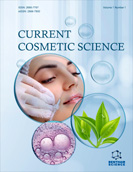
Full text loading...
We use cookies to track usage and preferences.I Understand
The cosmetic industry, driven by innovation, constantly seeks safer, more effective, and sustainable products. However, regulatory hurdles often impede the introduction of innovative cosmetics. This paper explores the convergence of advanced technologies and regulatory conformity, emphasizing the need for collaborative, interdisciplinary approaches.
Through an extensive review of literature and case studies, we reveal the multifaceted challenges within the industry. These encompass shifting consumer expectations, ingredient safety concerns, and intricate global regulations. Cross-functional collaborations, uniting researchers, regulators, industry experts, and consumers, are pivotal, driving innovation while ensuring product safety and compliance.
Our research stresses the importance of a proactive, all-encompassing approach to product development. This approach should integrate cutting-edge technologies, rigorous safety assessments, and smart regulatory strategies from project inception. Additionally, it emphasizes engaging stakeholders, sharing knowledge, and practicing transparency to earn trust from consumers and regulators.
This paper provides a comprehensive overview of the balance between innovation and regulation in the cosmetic industry, advocating for a paradigm shift characterized by collaboration and interdisciplinary efforts. By aligning innovation with regulatory compliance, the industry can effectively navigate the complex landscape of modern cosmetics, fostering the creation of safer, more sustainable, and consumer-centric products.

Article metrics loading...

Full text loading...
References


Data & Media loading...

